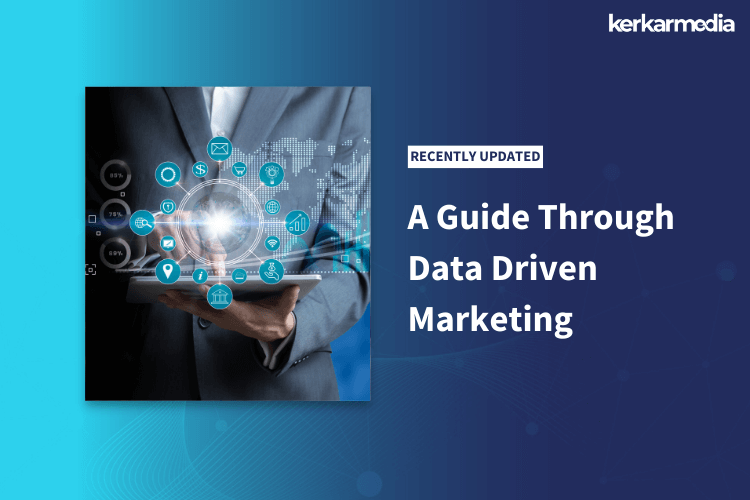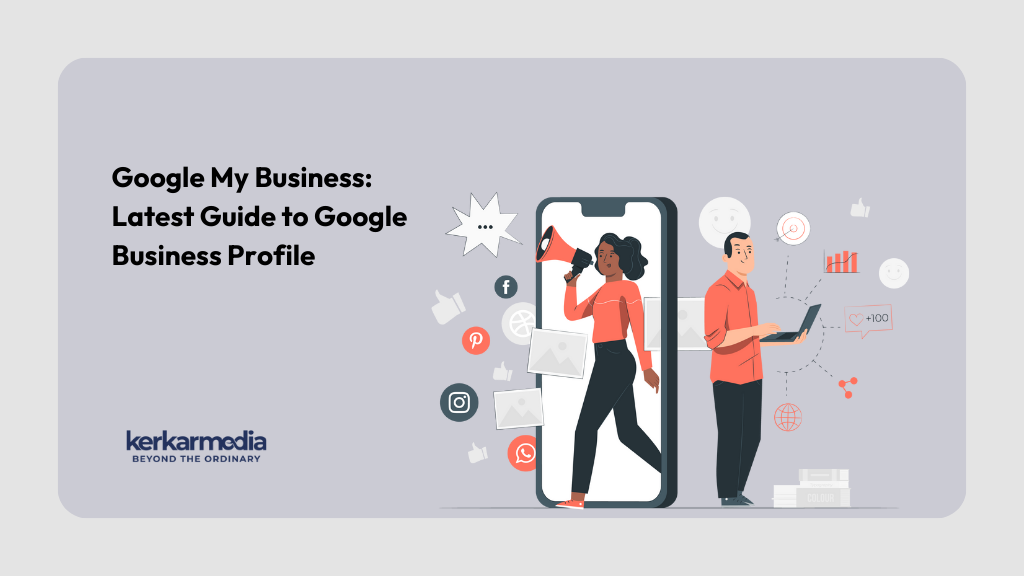Is Data Driven Marketing The Future Of Marketing?
There’s no doubt to the fact that data holds the power to become your most treasured marketing resource to boost up your insights. Evidently, some well-established marketers are already working on tracking their campaigns and collecting relevant data on the daily basis. The reason to do so is that having the correct information on your table means that you can create scalable and repeatable grossing up marketing processes. In fact, as we speak now data-driven marketing is transforming internet commerce.
However, we also cannot deny that not every marketer is savvy and has the required experience to deal with data adequately. In this digital marketing world having a data-based strategy is of utmost importance. So to get more ideas on how to keep track of the recent trends and improve your data-driven marketing game, make sure to read further.
What is Data Driven Marketing?
It is said that “Marketers who want to stand the test of time must start harnessing data to drive real-time marketing strategies and influential consumer connections.” And when we focus on the point of “influential consumer connections”, consumers nowadays are becoming more and more finicky about the messages they read and the products they buy. In response, marketers have to design personalized messages in order to attract and maintain a good relationship with their customers and that calls for data.
The consumer’s demand for relevant messages has given birth to a whole new kind of marketing and that’s called Data-Driven Marketing. Data-driven marketing is the strategy of using customer information for optimal and targeted media buying and creative messaging. In other words, data-driven marketing refers to the marketing insights and decisions that arise from the analysis of data about or from consumers. With such a major shift, we can say that it is one of the most transformational changes in digital advertising that has ever occurred.
The growth in quality and quantity of marketing data has been followed by explosive growth in the technologies for creative production and automation. Brands fully understand the metrics of 5 W’s and 1 H to look into the level of engagement of consumers with their marketing efforts that directly helps them to make better decisions covering up everything right from the timing of advertising in a given medium to the customization of marketing copy to cater to specific audience sector.
Utilization and activation of data, often in an automated or semi-automated manner, allows for a significantly more optimized media and creative strategy. This people-first marketing strategy is more personalized and is also responsible for driving considerable ROIs for marketers.
Where Did Data-Driven Marketing Come from And Where Is It Going?
Modern data-driven marketing began with the invention of Customer Relationship Management (CRM) software. CRMs allow marketers to track who individual customers are including the name and contact information.
CRM enables direct mailing, and therefore direct marketing campaigns. Batches of customers may receive different types of messages based on whether the marketer thought the segment was a good fit, and what the customer cares about.The CRM gained new prominence in digital marketing with Salesforce’s innovation to bring it to the cloud. This, in turn, started the age of sales and marketing automation.
Digital data-driven marketing came about as the CRM gave birth to a new category, marketing automation software. Example leaders in this space include marketing automation companies like Marketo and Eloqua. They pioneered building individual marketing profiles built on customer interaction tracking on the website and email. This profiling of customers enabled automated emailing based on certain triggers and activities as well as scoring of prospects into segments.Thus, began the age of marketing automation.
As marketers began segmenting their customers using marketing data, they ran into a new problem around the amount of data on tracked users being accumulated. Customers were now being tracked not only by owned media on marketer websites and emails, but also increasingly in paid media where ads were running—what’s now known as programmatic advertising. Solutions like Krux and Neustar arose to help marketers aggregate the data in a more manageable manner and produce new insights for new targeting and creative plans.
Thus, began the age of data management platforms. Today, marketers are spending over $6BN a year on data-driven targeting solutions like data management platforms (DMPs) and demand-side platforms (DSPs). However, the majority of marketing teams are not yet fully activating their data. They’ve so far been mostly limited to optimizing media with their data. Now that we got to know the definition of data-driven marketing and where does it comes from, it is equally important to understand how this mar-tech works and what good happens after working on it.
How Does It Work?
The process of data-driven marketing relies on the use of information (in the form of data) in order to drive marketing efforts. Data is collected on every aspect of a user’s engagement from demographics to market-wide metrics and individual interactions and is then analyzed in order to determine markers of success. These insights are then used to help decide where and how to focus marketing resources, the types of creative that are most effective at maximizing ROI, which customers are most likely to churn, and many other crucial details that can aid marketers in shaping brand growth.
Data-driven marketing is gaining in popularity in large part due to its proven ability to maximize ROI. It also helps to maximize the efficiency of marketing efforts by reducing wasteful spend and improving resource allocation, and ultimately empowers brands to deliver a more customer-centric approach to marketing. Gaining a better understanding of a brand’s prospects and their preferences is one of the most effective methods for increasing conversion rates.
But for the marketers to apply this one of its kind marketing technique, it is important to understand the benefits of using this mar-tech before getting started.
Benefits of Data-Driven Marketing
1.Personalized Marketing
The key to unlocking the secrets to modern marketing is relevance. In the times like now, it is very important to make sure that the message that you intend to deliver is reaching the right people along with the right message and at the right time. Therefore many of the marketers have taken an initiative to carry out this task with precision.
Today’s consumers are well aware of the tricks and tactics marketers use to engage them across various platforms and channels. This means that marketers must deliver even more spot-on, personalized content to develop true, value-based one-to-one relationships. That is why, any company, business, or brand needs to take out time and thorough themselves with the in-depth understanding of their customer profile mined from marketing technology platforms. This understanding will help the brand in creating a customized campaign that, in turn, are crucial to reaching their audience in a more relevant way than one-size-fits-all messages. A study found that business that employs data-driven personalization delivers five to eight times the ROI on marketing spend.
2. Better Audience Insight
On top of being extremely knowledgeable, today consumers are also constantly in touch with each other on many levels. Marketers can break through the noise with personalized content, all thanks to the rise of smartphones that has bought an entire world of opinions, options, and noise to the palms of a customer’s hand. But how do they even know where to start connecting with consumers in the first place?
Having the data to help understand the customer is the key to building a successful marketing strategy. Data gives demographic and behavioral data that is needed to create the best communication plan. Gaining actionable insights enables marketers to develop increasingly targeted campaigns that have a much more strategic impact.
Machine learning platforms and AI marketing solutions can scan huge data sets without incredible amounts of time and resources that would be required to do the same work manually by humans. These platforms can identify where consumers are spending the most time (i.e. certain social sites, specific apps, etc.) or where they are most likely to convert into a sale (i.e. a website vs. a social ad). This workflow continues with automated content or messages that are triggered based on specific consumer profiles and data-backed analytics. Marketers no longer have to worry about making sure nothing slips through the cracks. The reason being, data-driven marketing works to eliminate the cracks altogether.
3.Better Customer Selling
And when we talk here to improve the user experience, the marketers are basically looking after them. Through data-driven campaigns, the brands can look more closely at the entire customer experience. Of course, marketers can afford to lose their customers right. Data-driven campaigns allow you to look more closely at your customers and customer satisfaction surveys can help you understand where any improvements are needed. This way, instead of working on the overall experience, you can spend more time improving the specific aspects that are essential for your customers.
4.Cross-Selling and Up-Selling
Once marketers have a 10,000-foot view of their ideal consumer base, they can drill down to analyze consumers on an individual level, honing in on personal, customized interactions. It’s at this crossroads of big data and personalized engagement that marketers will find a sweet spot. A data-driven marketing strategy uncovers connections and helps marketers develop proactive action plans to maximize consumer engagement and conversation.
Additionally, data-driven marketing provides marketers with valuable insights that are helpful to identify where the products can be sold to customers more frequently. Furthermore, it helps you to identify the different sections of the audience or customer that would benefit from special and targeted campaigns that are created by deeply understanding the audience’s preferences and the products they enjoy. Use data to sell more!
What’s Trending in The Market?
While using data to improve your marketing efforts is not a new thing, there are some recent developments and trends you should be aware of.
1. Artificial Intelligence
While the use of artificial intelligence (AI) in marketing is still in its developing phase, it looks like it will grow rapidly in the few upcoming years. AI uses large amounts of data sources to create personalized campaigns tailored for individual customers. If you want to stay ahead of your competitors, don’t be scared of test new AI products, and use a wide range of data assets you have to create precise AI algorithms.
2. People-based Marketing
The marketing mix as we know it has been changed since people-based marketing came along. It means that nowadays marketers can target and measure their customers at the level of real individuals. This means that brands can optimize their content more precisely which in turn increases the click-through rates and the ROI. Therefore, this is the right time to take advantage of people-based marketing, combining digital and traditional marketing, and analyzing audience and their lifecycles even more in-depth than before.
3. A Cross-Channel View
Nowadays, customers are more demanding than ever. They are using many platforms and expect those brands to do so too. Moreover, they expect timely and relevant content. This means that providing an excellent customer experience across different channels is more important than ever.In fact, you should start using new technologies to analyze previously hidden online interactions at an individual level. This will help you gain better insights and provide a personalized experience across your communication channels.
4. Predictive Analytics
Another powerful aspect of data-driven marketing is the possibility to make accurate predictions. Statistics say that 89% of marketers admit that predictive analytics will take an important place on their roadmap. Data can help you predict with great accuracy and have a peek at what your clients will do next.So don’t hesitate and record the interactions with your customers at a more granular level. This will help you not only to understand past trends but also predicts your customer’s future actions. These insights will definitely empower you to improve your current strategies and focus on where your buyers are.
What tools you should use to get data-insights?
Of course, when the brand or the marketers are wending through courses of data-driven marketing, there is a definite need of the tools to get those insights, right? No data is complete without management and analytical tools. When you process business or brand online, to make your work a little easier and keep you updated with regards to your website traffic or social media accounts, there are certain management and analytical tools to help you out.
Social Media Management Tools
Social Media Management spins around the concept of managing a business’s online interaction and content direction pan different platforms of social media networks. This Social Media Management appertains the use of a wide range of tools, software and services that make sharing content online on social media easier for businesses in all areas and sizes. Some of these social media management tools are –
- Hootsuite
- Buffer
- TweetDeck
- SocialOomph
- Social Pilot
- Zoho Social
- eClicher
- Sprout Social
- Sendible
- Agora Pulse
- Meet Edger
- Tailwind
Social Media Analytics Tools
Social media analytics is the practice of gathering data from social media websites and analyzing data using social media analytics tools to make business decisions. The most common use of social media analytics is to mine customer sentiment to support marketing and customer service activities.Some of these social media analytics tools are –
- Facebook Analytics
- Pinterest Analytics
- Twitter Analytics
- Instagram Analytics
- Google Analytics
- Adobe Analytics
- Buzzsumo
- Delmondo
- Snaplytics
- Iconosquare
- ShortStack
- TapInfluence
- Gleam














